The 2019 Porsche 911 Carrera 4S might be the eighth-generation 911 but it’s the first time Peter Anderson has driven one.
Like the Lotus Elise, the 911 is a car I have only ever admired from afar. Almost everybody I’ve ever met has at least had a ride in one or a mate had one who let him drive it. It wasn’t until 2017 that I had the chance to ride in one – a 991 Targa around, of all places, Circuit Paul Ricard. He wasn’t pushing very hard and got rounded up by, well, everything.
But it’s now 2019 and we’ve got a new 911, the 992. Lots of new technology, new cabin, changes, changes, changes.
This isn’t going to be one of those self-indulgent, “Ah, yes, but is it still a 911?” stories. I’m not qualified to tell you that.
I am qualified to tell you if it stands up against the best from Germany and Britain, whether it’s a match for an Audi R8, an M850i or maybe a McLaren 540C. So let’s get cracking.
Look and Feel
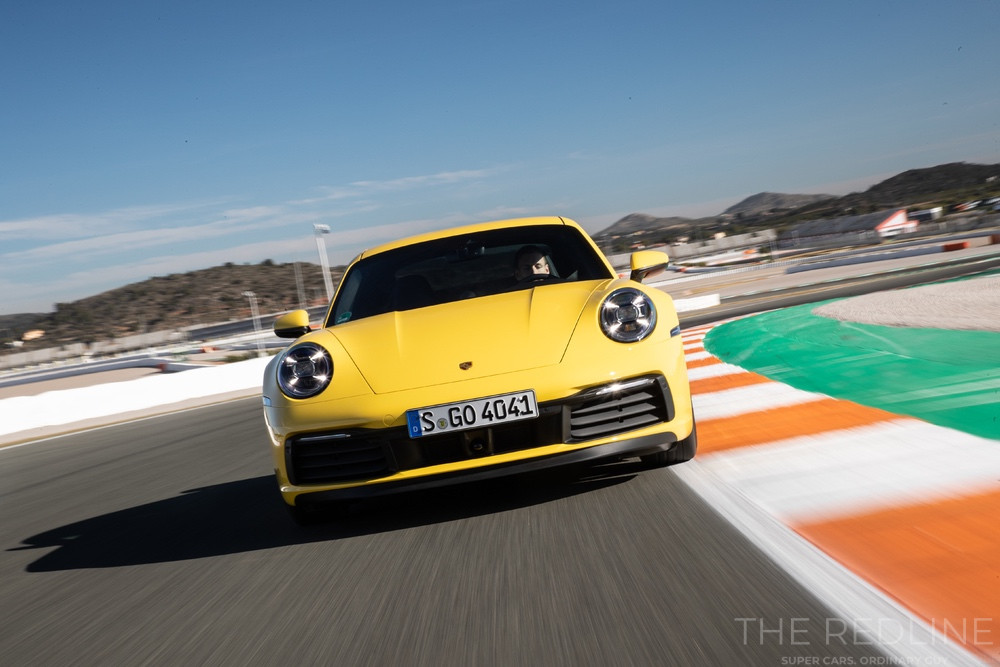
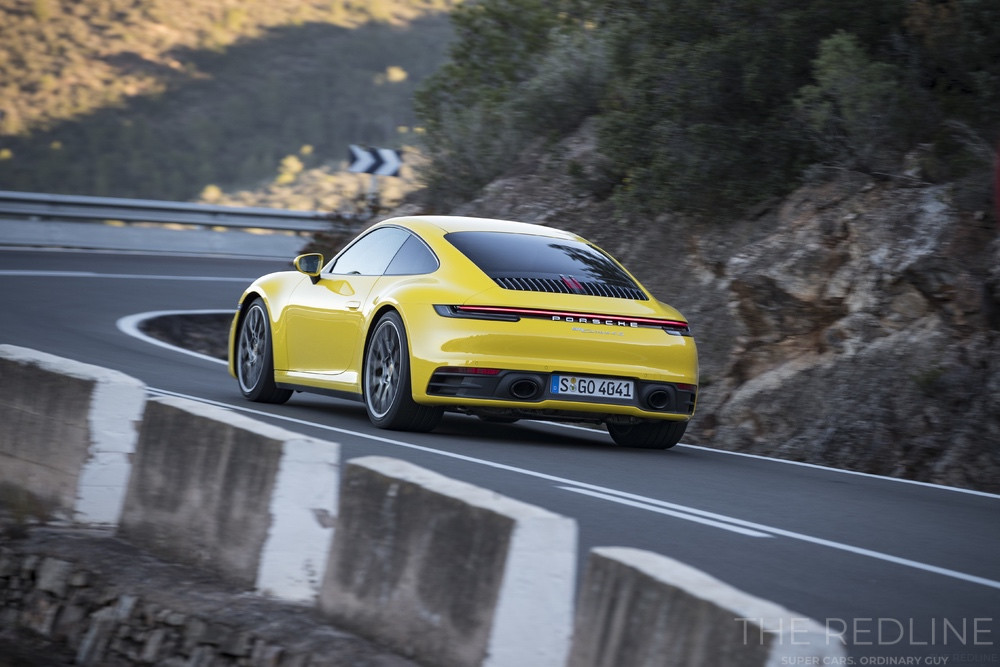
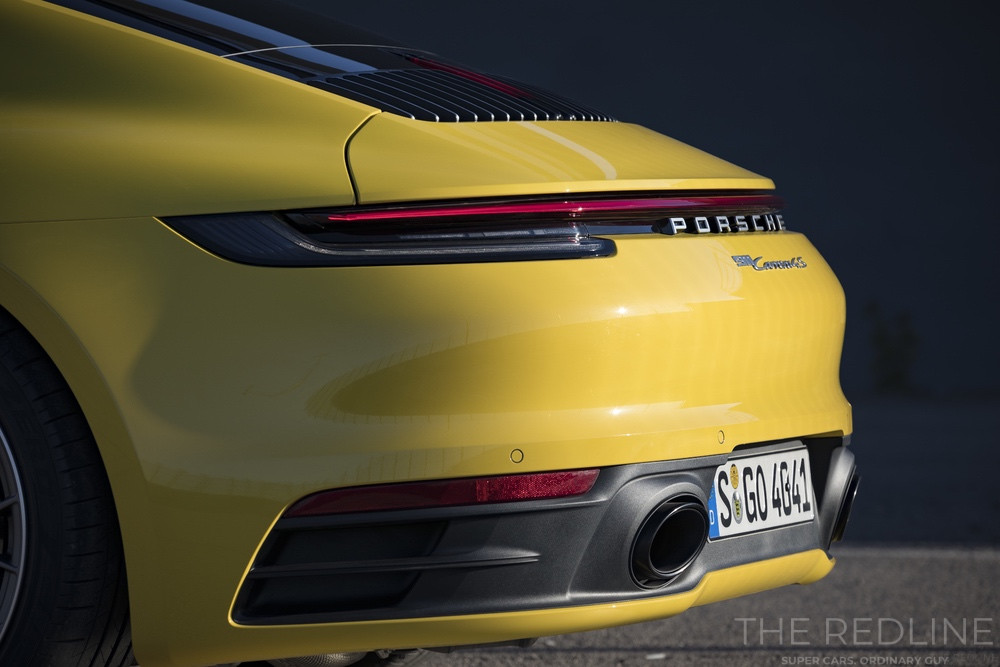
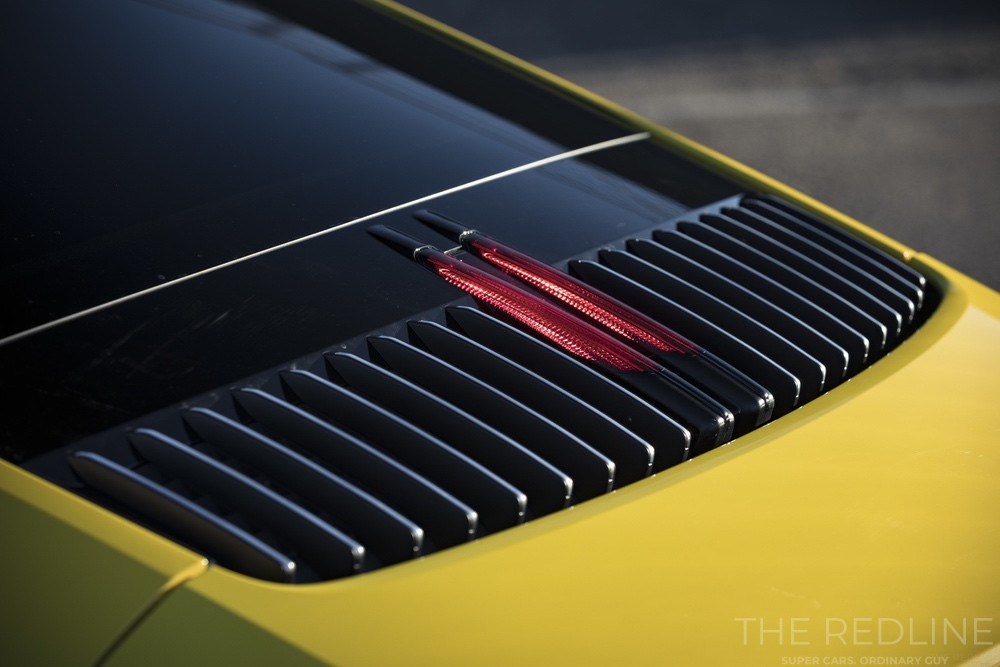
Okay, there is a bit where I can tell you if it’s a 911. There is no other car on earth that looks anything like it and this one, I think, is extremely difficult to fault. Almost impossible, actually.
The 996 was the nadir – flabby-looking with those awful headlights, the world’s obsession with it is endlessly mystifying to me. The 992 is the best modern iteration since the lithe 993. To my eyes, anyway – everyone has a strong opinion about the 911 and you’re entirely welcome to be wrong, I mean, you know what I mean.
The 992 takes back the clean look of the 993. The full width light bar at the rear is fantastic, as is the high-level stop lights integrated into the grille. The wing sits flush into the rear section and the badging is just right. The clean lines of the bumper and the huge exhausts flanking the number plate really work.
In profile there’s a lovely curve from A-pillar to tail and the 20-inch wheels are just right. And the front is a cleaner version of the 991, which was almost there. Add in the funky four LED daytime running lights and you’ve got a proper, 21st-century design. Yes, it’s way bigger but it seems like it has taken almost 25 years for the 911 to work out how to carry its girth.
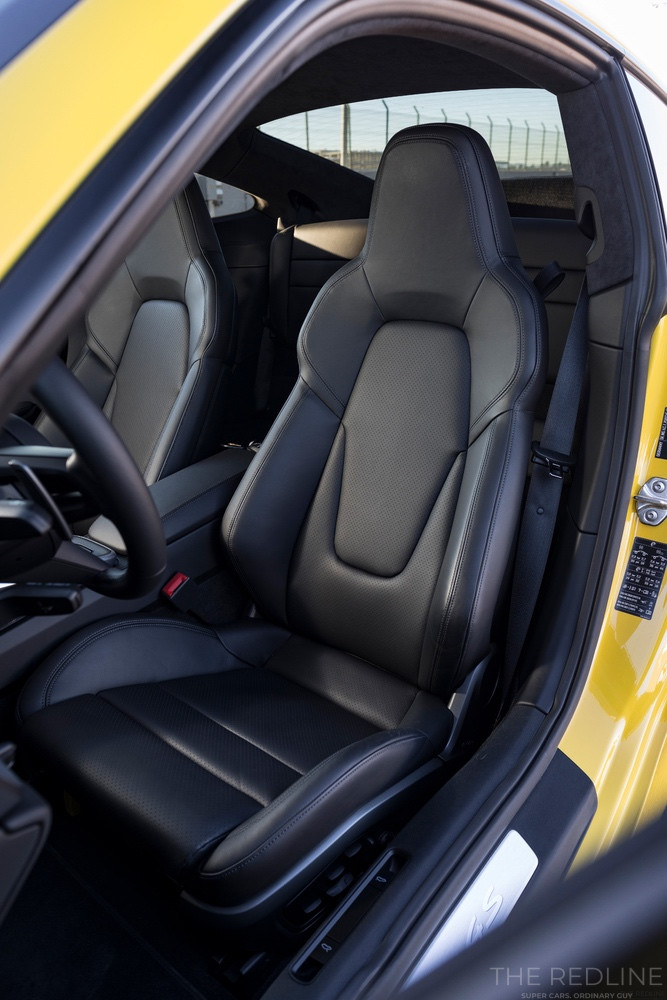
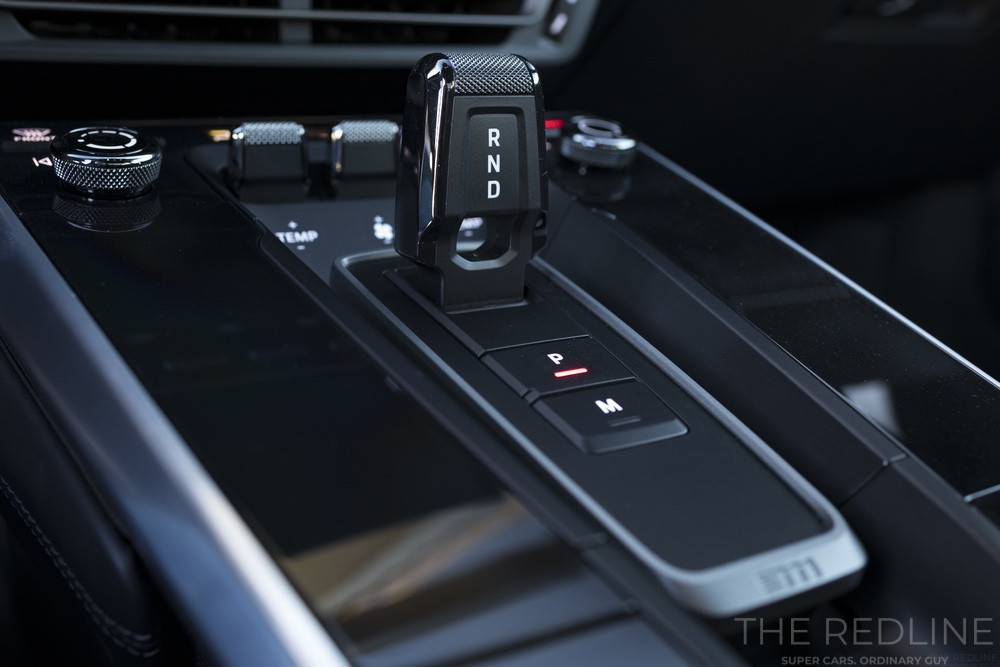
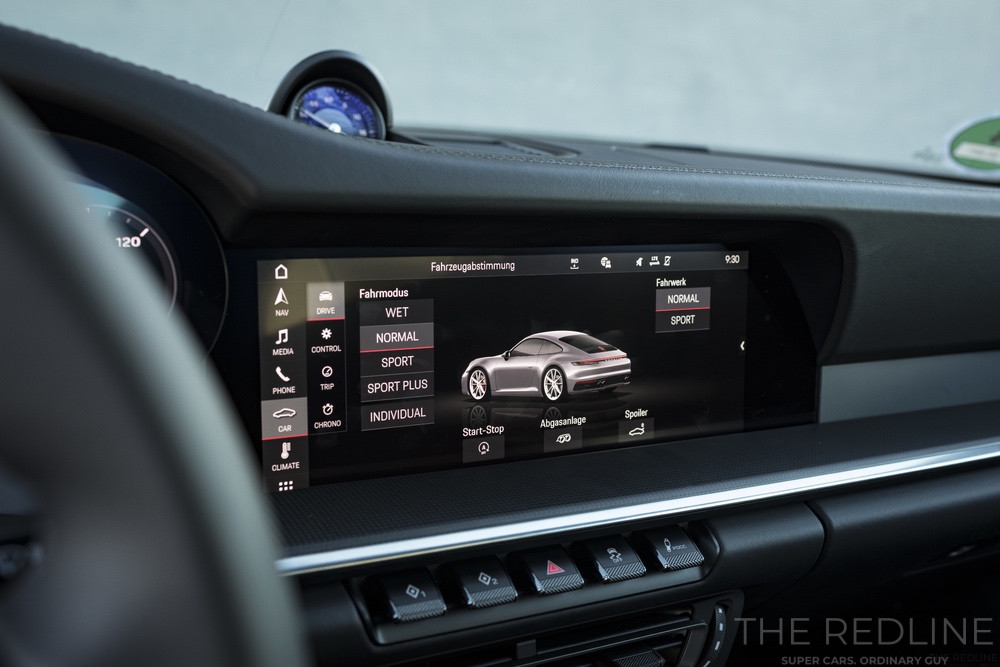
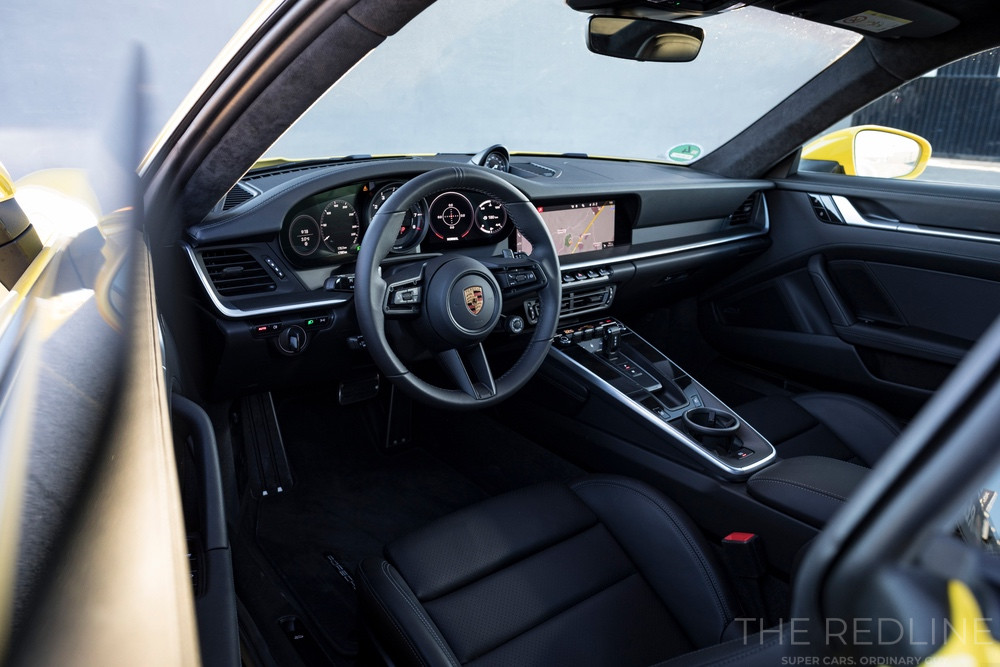
The interior is – thankfully – devoid of the button festival of the 991. Regular Redline co-pilot Mark Dewar says he prefers the button explosion, but I am not a fan.
The Porsche PCM system runs on the huge central screen and the dash is the traditional five dial layout. Like the Cayenne, you can’t see the dials on the edges so they don’t have to tell you much. One thing I can’t get anybody to like – including me – is the weird shifter paddle thing poking out of the dash like a toddler’s tongue.
It’s all beautifully built – more so than the Cayenne, which is a bit ordinary – but everything fits just right and looks the business. The rear seats are ludicrous, but they’re there for emergencies. I crammed one bloke in who is maybe 175cm and he wasn’t super-pleased. He forgot about it when I gave it a boot full.
Chassis
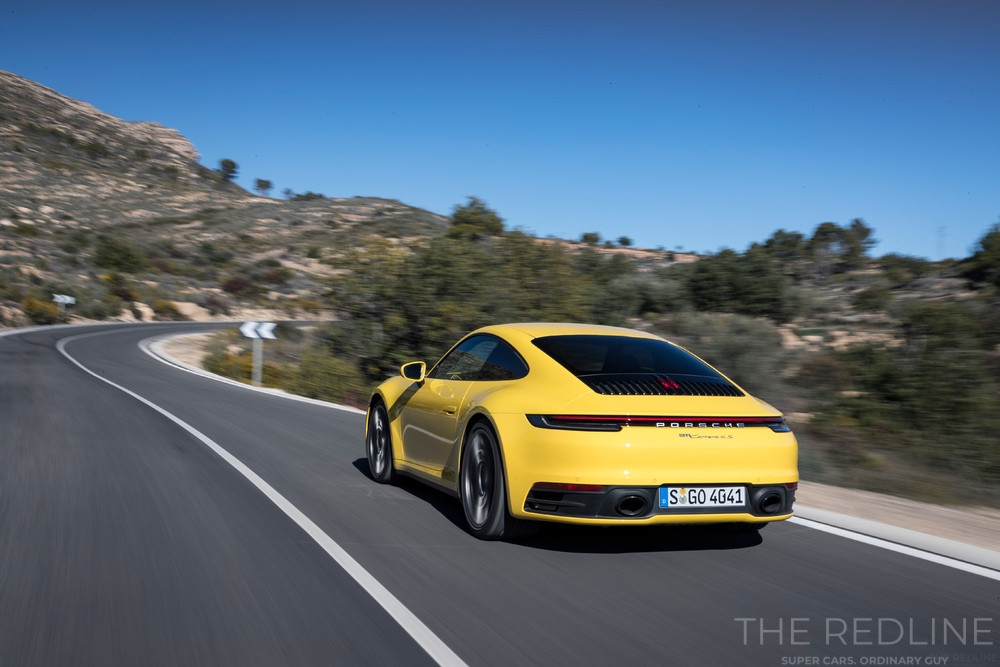
The bad news is that the 992 is 55kg heavier. The good news comes in two parts.
Firstly, there’s even more aluminium in this car, with steel now making up just 30 percent of the body. That’s down by over half. Most of the body parts are aluminium and the extra 20mm is mostly at the front to house a new crash structure. It’s worth the flab for more safety, I reckon – these things are damn fast and things can go wrong.
All 911s are now wide bodied, with an extra 45mm accommodating a wider track, which is an excellent thing.
For the first time in a 911, the front and rear wheel sizes are different. The front rolls on 20-inch wheels wrapped in 245/35s at the front. The rears are massive 21-inch units with 305/30s. If you don’t tick any boxes, the factory-fit tyres are Goodyear Eagle F1 Supersports, which are the tyres I had. Box-fresh they were, too.
You can choose either Michelins or Pirellis from the factory. It would be very interesting to see those numbers.
The car I drove also had Porsche Dynamic Chassis Control Sport (PDCC Sport) with Porsche Torque Vectoring Plus, which Porsche says has active roll stabilisation and the rather vague “enhanced agility”. As you have to also tick the rear-axle steering box to get this, I had that too. I would suggest you tick at least one of these – the four-wheel steer is brilliant.
The Sport Chrono package throws in active engine mounts, a Mercedes C63S-like mode-switching dial on the steering wheel; individual driving mode in addition to Comfort, Sport and Sport Plus; throttle blipping on the downshift; PSM Sport mode; Track Precision App (didn’t use it) and launch control. Do get this option, too.
My car had the standard steel brakes because the carbon ceramics would be utterly ludicrous. The rears are 330mm while the fronts are whoppers at 350mm.
Drivetrain
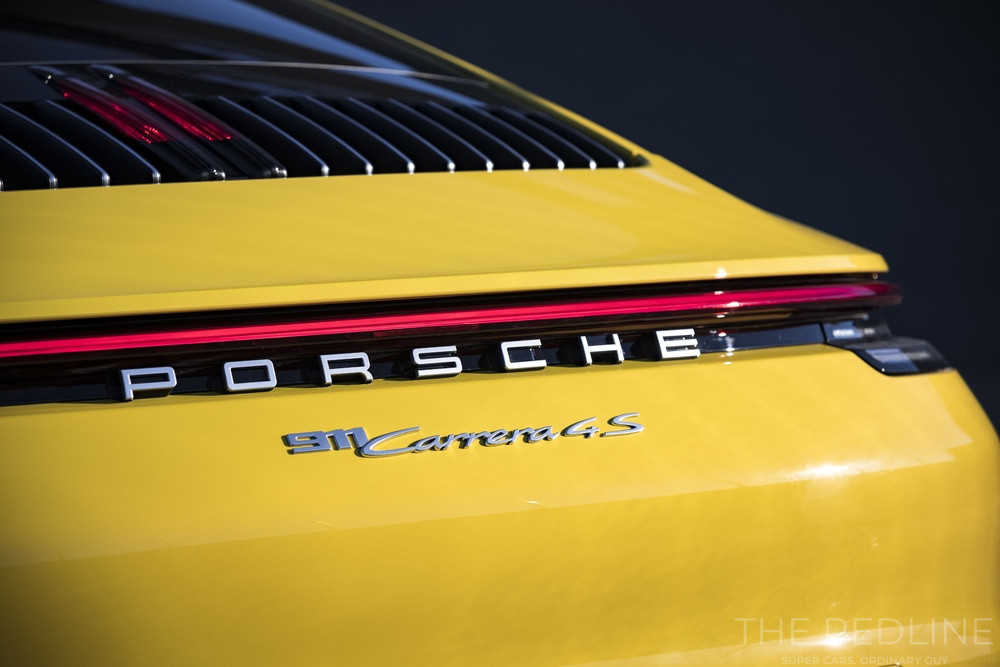
This is the second part of the good news.
Here in the S, the 991.2’s 3.0-litre twin turbo stays, but now with more power and torque. The engineers shifted the engine further forwards and the mounting points further apart to make it less rear-engine-ey and more mid-engine-ey.
Power is up by 22kW (30PS) to 331kW (450PS). 0-100km/h arrives in 3.6 seconds (0.1 quicker than the Carrera 2), nearly half a second quicker than the 991.
The increase in the engine’s figures come courtesy of bigger turbochargers with cast intake manifolds, new intakes, new piezo injectors that are more controllable and bigger charge air coolers under the grille where they’re supposed to work better. The air filters are now wrapped in the rear guards.
The Sport Chrono Package drops 0.2 seconds off the standard 4S’ 0-100km/h time.
Power reaches all four wheels via an eight-speed PDK transmission. It’s interesting to see Porsche doing this – my immediate thought was, “Why not go with the ZF eight-speed?” but
a) the purists would lose their minds and
b) I don’t think it would fit the 911’s unique installation.
With an extra gear to play with, first is shorter than the 991’s seven-speeder and eighth longer than the old car’s seventh. If you’re giving it a hiding, there is also a fast-shift program which I can tell you works a treat.
The new gearbox is also designed to go with the new hybrid powertrains destined for the 911, so that’s going to be interesting.
Other things of note on this car were the sports exhaust system, which made it a little bit more vocal when switched into higher modes. Not sure if it was worth the extra, but there you are.
As for those modes, you have Wet, Comfort, Sport and Sport Plus. Amusingly, when the car works out it’s wet, it suggests switching to Wet mode. That’s kind of cute, even if the message is a bit passive-aggressive.
What Did I Do With the 992 911 Carrera 4S?
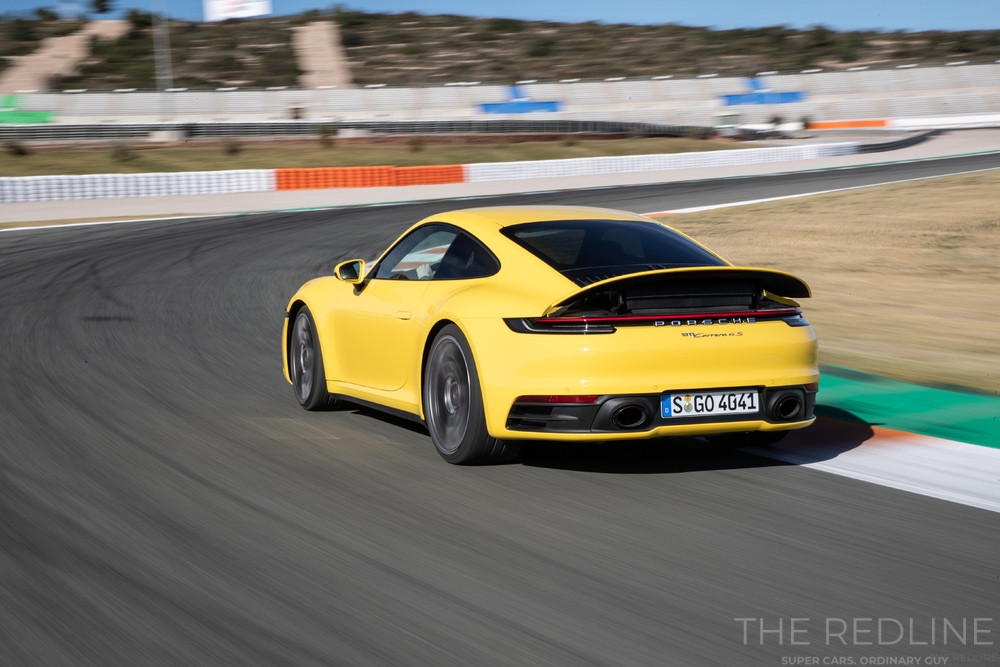
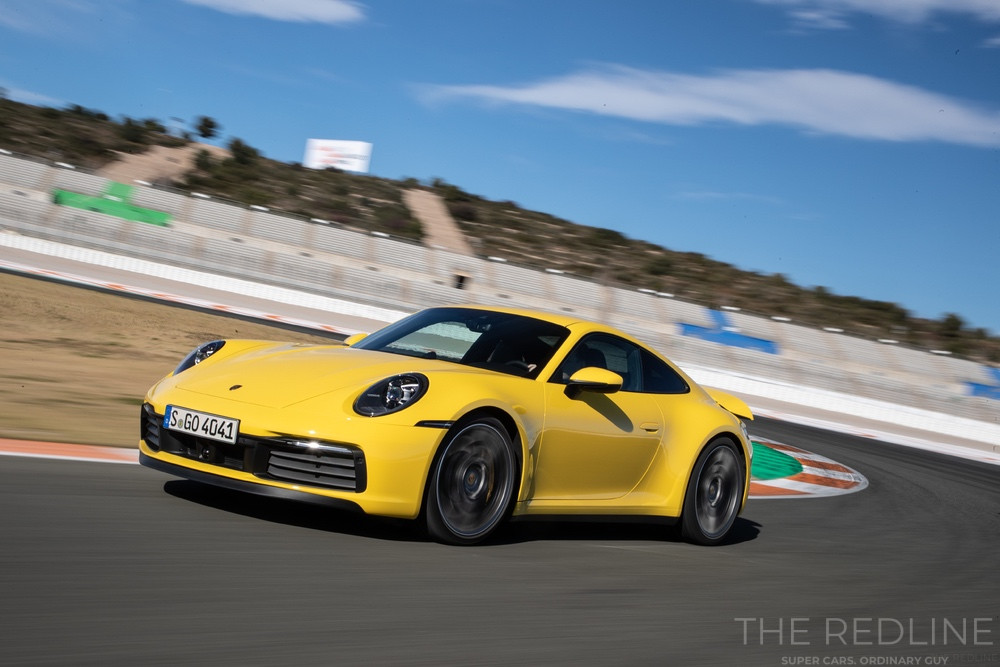
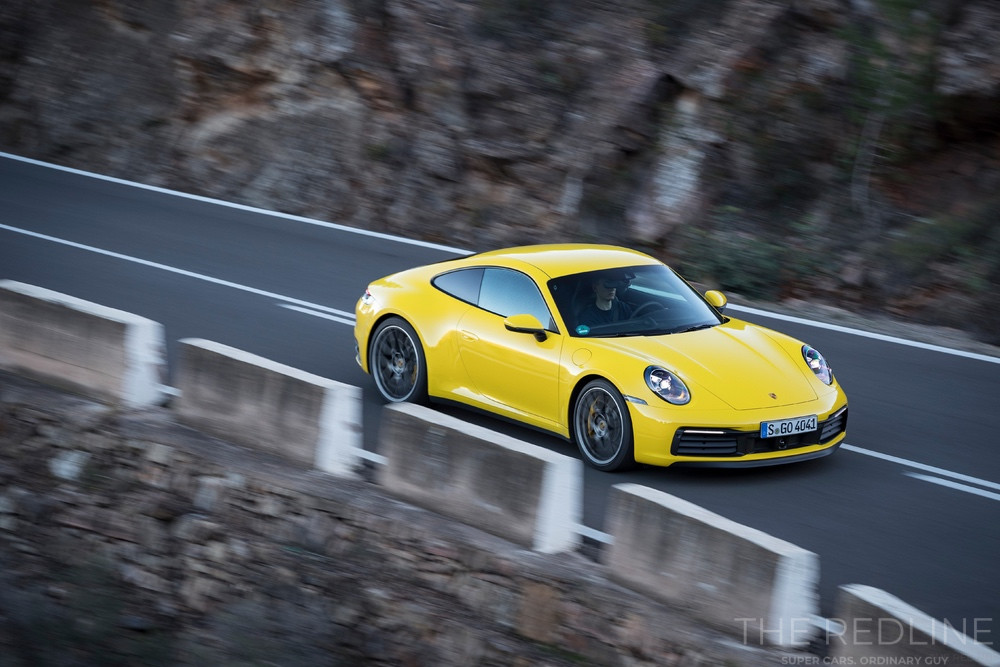
I have to be careful here. As I write this, the real reason I had the car has to remain a bit of secret. No, really. I can’t wait to see the end result, though and for you to see it too. I’ll post a story when it’s ready.
So here’s how the day went. 4:30am start, drive to Sydney Motorsport Park (SMP). It was dark and cold (for Sydney), but it was dry. Wait around for sunrise, clean the car up, straight out on to the main straight for some high speed runs.
Then we drove back through the under-track tunnel to the relatively new layout of the South Circuit. The day I was there coincided with an EV industry day. While I was haring around in a 3.0-litre turbo flat-six, Teslas and Leafs and all sorts of EVs whirred around the rest of the track.
The South Circuit is a pure delight – it’s basically all corners, with a very short pitlane and pit straight. I grew to love it in the way I don’t really love the main circuit. It has all of the good bits of Eastern Creek without the scary bits.
And after a day with the track pretty much to myself and another 911 (a 991.2 T), I drove home, arriving just before 9pm. A seriously long day.
High Speed Runs
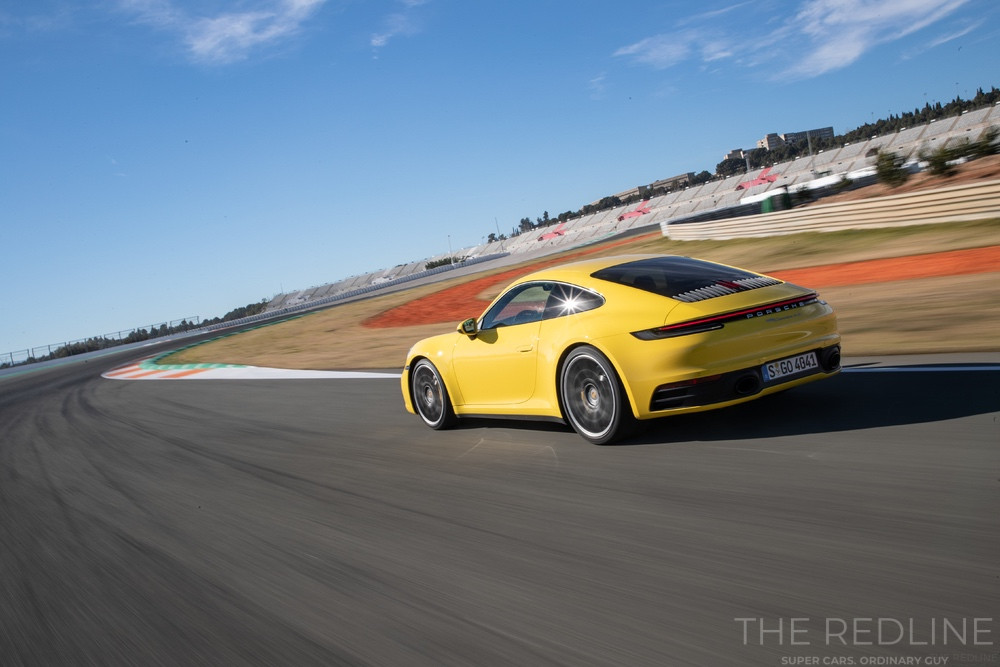
What did it do as soon as I lined up for my first run? It started raining. Those of you who know about SMP know that Turn One is a) very fast (and I was treating it as run-off) and b) dreadful in the wet because there’s standing water everywhere. I was the only person on the track, so there was nobody to clear the water.
It didn’t just rain. It poured. On the first run I just floored it in Sport Plus. The engine bellowed, there was the tiniest of squirms from the rear tyres and we were off. The 911 doesn’t gather speed, it sucks it up as though dragging it in from the air around it. Triple figures appear almost in an instant.
That’s cool, though, I’m “used” to that from other cars. Every car has its own power delivery, but the 911’s is something else again in this turbo era, feeling more like a naturally-aspirated car apart from the burps and whooshes.
The thing that really got me was at turn one. Despite a wet track and the knowledge I was running out of straight road, the change of direction was instant. Combined with all-wheel steer, the car was totally settled. Scarily well settled, actually. The way it turned in gave me a little fright because I wondered if the rear was going to come around (you know how all 911s do that, right?). But it didn’t. By the time I reached the pit blend line, I was able to turn around and do it again and again and again.
The grip in the wet, even on the Goodyears, was phenomenal. And the fact it could blat through 170km/h without drama on a soaking wet track had me shaking my head on every run. Amazing.
The South Circuit
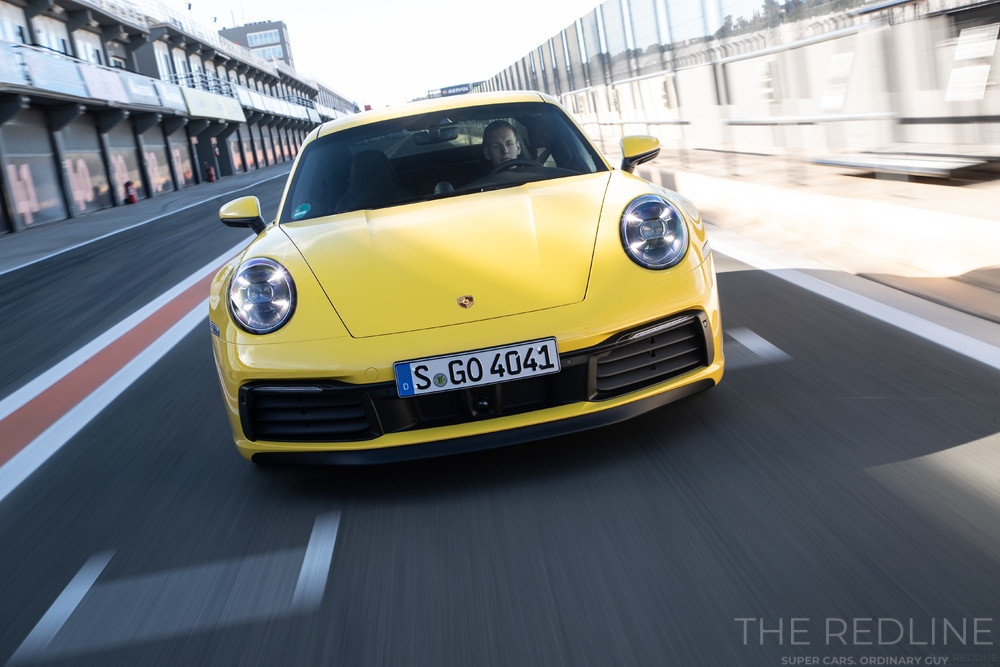
The rest of the day was spent on the South Circuit, with a couple of sounding runs through the tunnel under the track that leads to the pit paddock, just for fun.
The track was drying by then, but there was still plenty of standing water around and some very wet kerbs. Obviously, Sport Plus was the mode I stuck with. Binning a brand new 911 at a race track would have been disappointing for a very large number of people. Chiefly, Porsche Australia, I should imagine, but also the 50-strong film crew there to film me cutting laps.
It’s a grand thing to have a racetrack largely to yourself for a day. The secret project involved filming the car at all speeds, so I got to play with the car. Clipping kerbs (at low speed), different lines, looking for grip. It’s hugely adjustable, even in the Carrera 4 version. It’s so obviously rear-biased it barely needs mentioning, but it also reminds the mouth-breathers that all-wheel drive doesn’t have to feel like it’s on rails.
One shot called for a big tail wag out of a hairpin and the car duly delivered with a fair amount of provocation. What’s even more impressive is how much rope it gave me before gently gathering it all up again. Some systems intervene with a guillotine, this was a far more soft-edged approach, with none of the awkwardness that goes with the dropping blade.
During a day of being absolutely hammered, the brakes never gave up. The South Circuit is hard on brakes – lots of corners, a few of them downhill and given the 911’s propensity to hit warp speed, they were sorely tested despite the lack of long straights.
But what my brain kept coming back to was the way it changes direction – the four-wheel steer certainly helps, but its ability to go left and right, to handle that awkward downhill left-hander. I can’t imagine why you wouldn’t spend the money for a car that’s so gloriously pointy but without the instability.
Redline Recommendation – I Get It.
And then, I drove it home. The tyres were fine after a day’s hammering, the car comfortable and warm and I had some lovely quiet tunes playing on Apple CarPlay to reduce my heart rate and dilute the adrenaline. It had been a huge day but the 992 911 took it all in its stride.
I’ve said it before – good cars stick in your head, but great cars get into your bones. I had pretty much everything but snow to deal with in the 911 and it was ready for more. It’s a massive achievement that few of its ilk can match – ferocious power with a delicate on-road experience that would keep my mother happy.
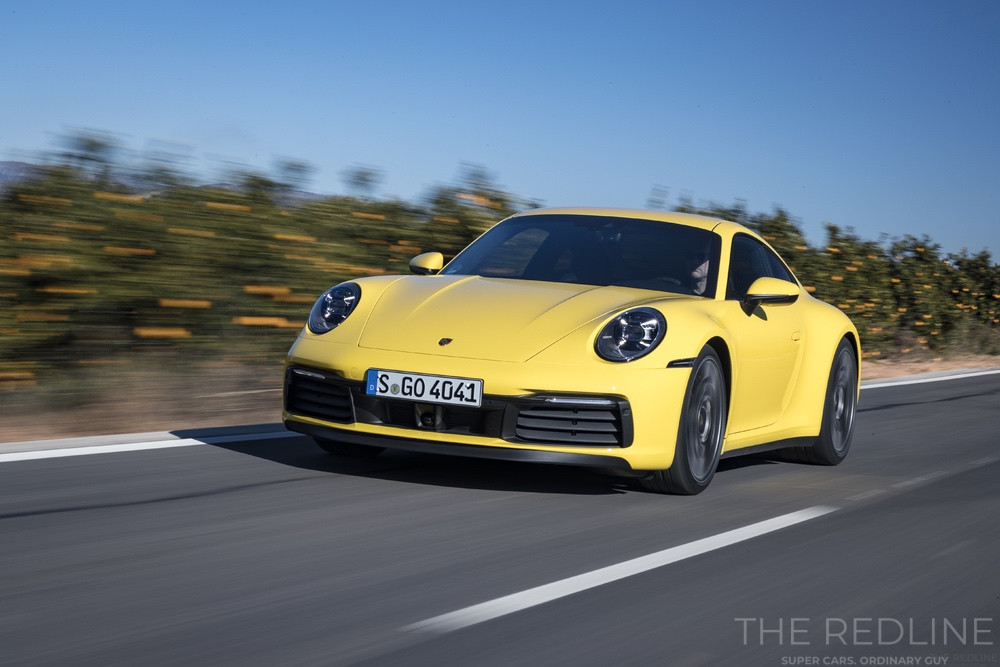

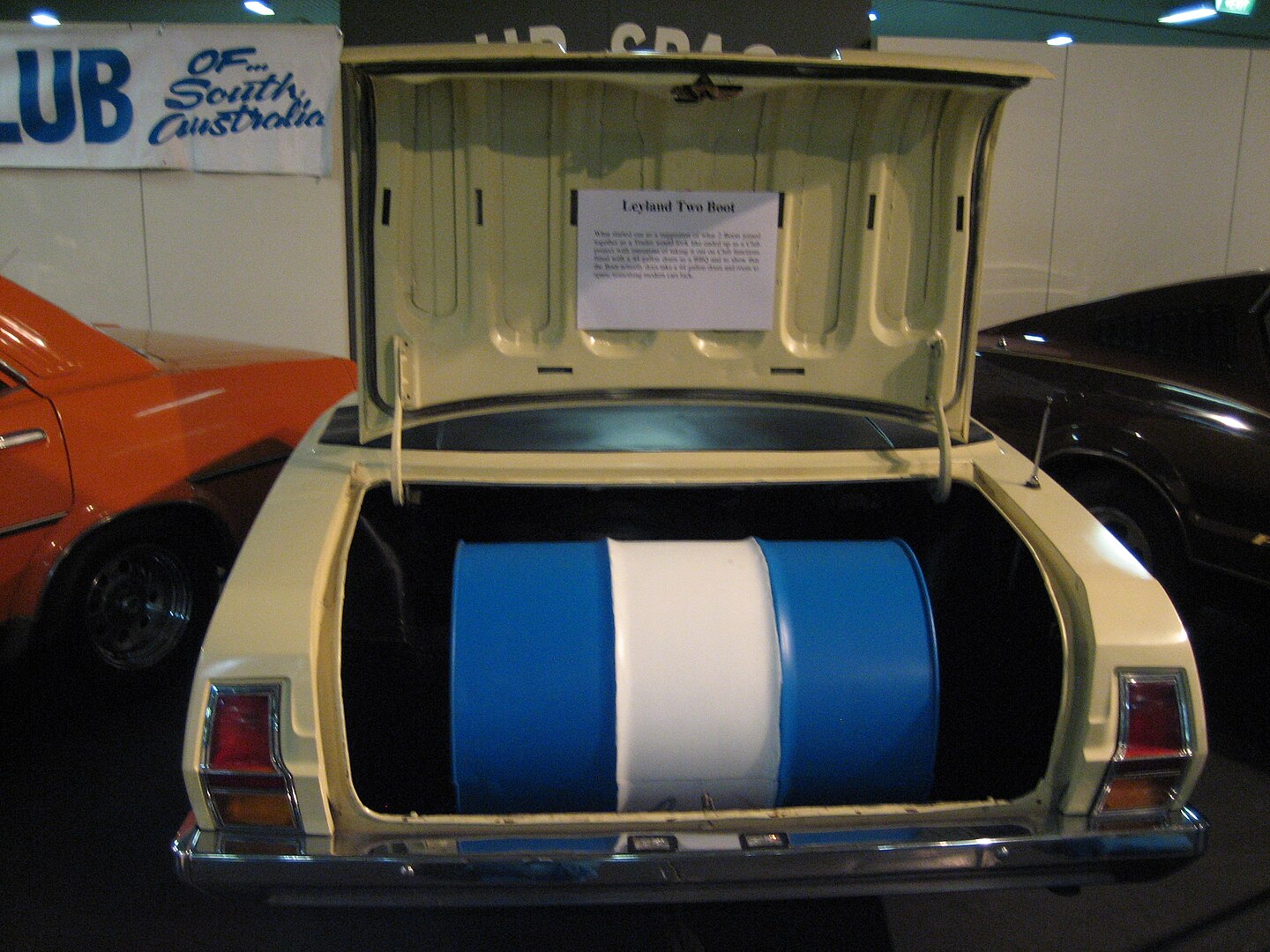

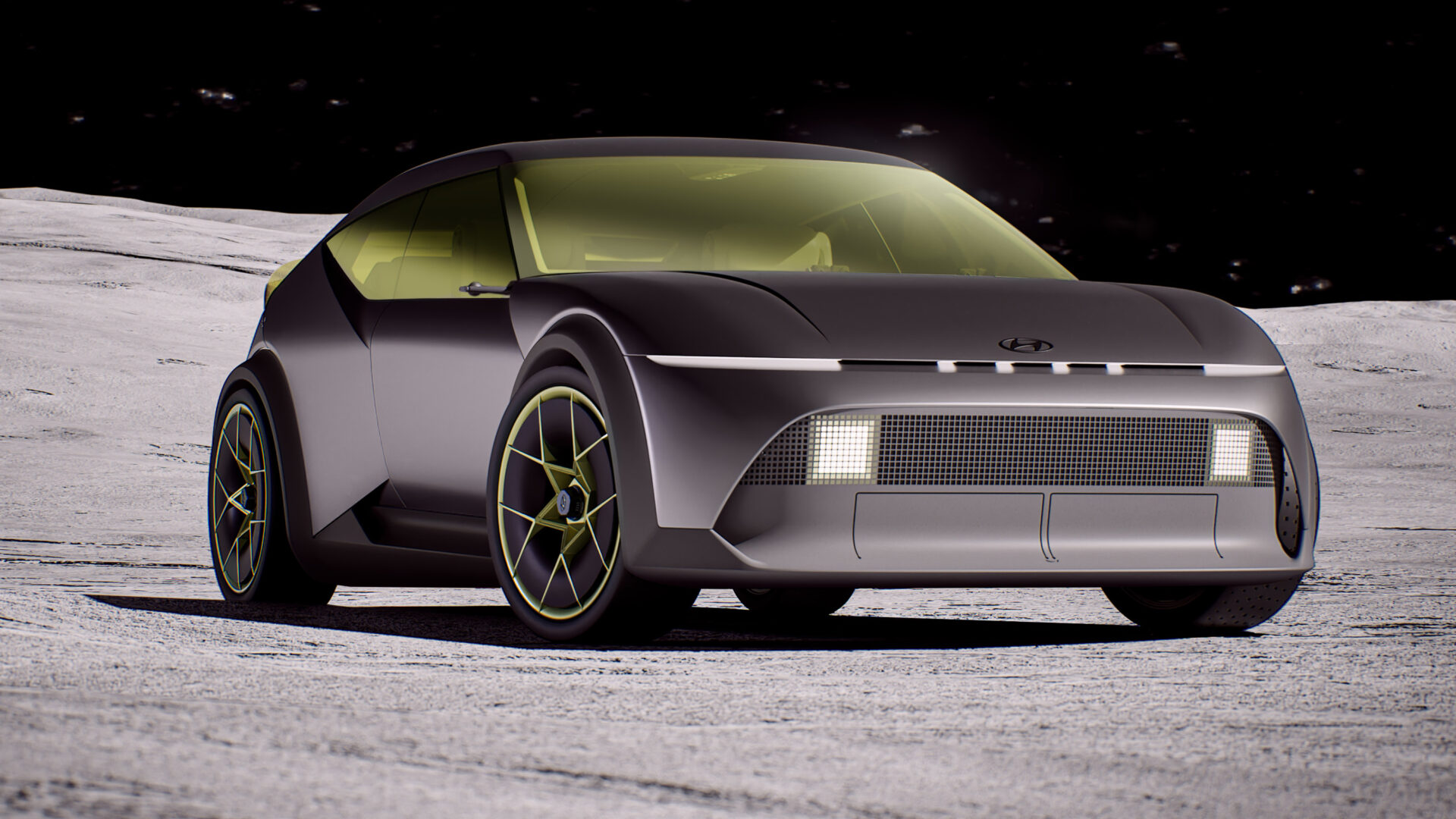
Leave a Reply